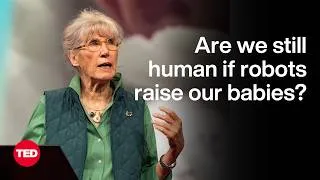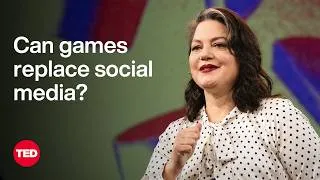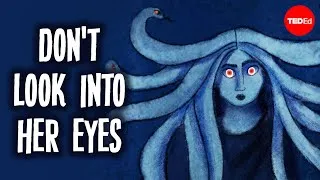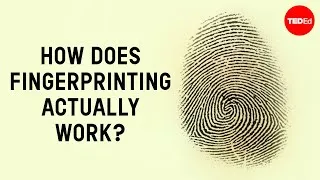请双击下面的英文字幕来播放视频。
翻译人员: Christina Tang
校对人员: Jinnie Sun
00:07
According to legend,
in the 27th century BCE,
0
7128
3587
据传说,在公元前 27 世纪,
00:10
the Yellow Emperor of China charged
his historian, Cangjie,
1
10798
3963
黄帝命史官仓颉
00:14
to develop a system of writing.
2
14761
1918
造字。
00:17
Sitting alongside a riverbank, Cangjie
noticed the imagery that surrounded him.
3
17138
4588
仓颉坐在河岸边,注意到周围的意象。
00:22
From this, he created
the first Chinese characters.
4
22226
3212
由此,他创造了最初的汉字。
00:25
And that night, the sky rained millet
while ghosts cried,
5
25730
3795
那一夜,天空下起了毛毛雨,
同时鬼魂在哭泣,
00:29
fearing their actions may now be
condemned by the written word.
6
29525
3045
他们害怕自己的行为
会受到文字的谴责。
00:32
We can’t say for sure whether
the story is true.
7
32987
2753
我们无法确定这个故事是否属实。
00:35
But the earliest artifacts containing
Chinese characters
8
35740
3003
但是最早的包含汉字的文物
00:38
date to the Shang Dynasty,
around 1250 to 1050 BCE,
9
38743
4671
可追溯到商代,大约在
公元前 1250 年至 1050 年,
00:43
still making it one of the earliest
forms of written language.
10
43664
3087
至今仍是最早的书面语言形式之一。
00:47
Characters etched on ox bones
and turtle shells
11
47293
2711
刻在牛骨和龟甲上的文字
00:50
show Shang kings’ writings
to their ancestors,
12
50004
3087
展现了商王对祖先的祭文。
00:53
discussing everything from agriculture
to the origins of a toothache.
13
53257
3629
他们在其中无所不谈,
从农业到一次牙痛的根源。
00:57
And as the legend suggests,
14
57095
1543
正如传说所暗示的那样,
00:58
these ancient characters
were mainly pictograms,
15
58638
2878
这些古代文字主要是象形图,
01:01
or symbols that resemble
what they’re meant to represent.
16
61516
3003
或与其代表的东西相似的符号。
01:04
Even today, some of the most foundational
Chinese characters remain pictographic,
17
64894
4338
甚至在今天,一些最基本的汉字
仍然是象形的,
01:09
like rén (人), which means person,
and mù (木), which means wood or tree.
18
69232
5088
例如“人”,意思是人,
以及“木”,意思是木头或树。
01:14
Some characters are ideograms, or
symbols that represent abstract concepts,
19
74654
4504
一些字是表意文字
或代表抽象概念的符号,
01:19
like the numbers yī (一),
èr (二), and sān (三).
20
79158
3295
例如数字“一”、“二”和“三”。
01:22
Others are compound ideograms,
21
82620
2002
其他是复合表意文字,
01:24
which combine two or more
pictograms or ideograms.
22
84622
3045
它组合了两个或多个象形符号或表意符号。
01:27
For example, xiū (休) places
the character for person
23
87875
3545
例如,“休”将人这个字
01:31
next to the character for tree
and means to rest.
24
91420
3254
放在表示树的字旁边,
意思是休息。
01:34
However, most modern-day characters
are known as logograms,
25
94882
3796
然而,大多数现代汉字被称为词符,
01:38
and are constructed of two components:
a radical component,
26
98678
3503
由两个部分组成:一个形旁
01:42
which gestures at the meaning
of the character,
27
102181
2252
表示字的含义,
01:44
and a sound component,
which hints at its pronunciation.
28
104433
3212
以及一个声旁提示字的发音。
01:47
And all characters are built
from a variety of strokes,
29
107812
3170
所有的字都是由各种笔画构成的,
01:50
which are often simplified
to eight basic types.
30
110982
2669
通常简化为八种基本类型。
01:53
There are 214 radicals,
each with its own definition.
31
113860
3670
总共有 214 个形旁,
每个形旁都有自己的定义。
01:57
Some can stand alone, while others cannot.
32
117655
2503
有些可以独立存在,而另一些则不能。
02:00
For instance, the radical rì (日),
written on its own means sun.
33
120366
4171
例如,“日”这个形旁单独书写时
就是太阳的意思。
02:04
It’s also used in characters
with sun-related definitions,
34
124787
3045
它也被用于与太阳有关的字中,
02:07
such as xiǎo (晓) meaning dawn.
35
127832
2336
如“晓”,意为黎明。
02:10
The radical cǎo (艹), on the other hand,
never stands alone,
36
130459
3295
而形旁“艹”则从不单独出现,
02:13
but can be found within characters related
to grass and plants,
37
133754
3045
但可以在与草和植物有关的字中找到,
02:16
like huā (花) meaning flower.
38
136799
1919
如“花”,意为花朵。
02:19
And the radical shuǐ (水), meaning water,
always stands alone,
39
139010
3712
形旁“水”,意为水,
总是单独出现。
02:22
but has a variant (氵) that is used when
it’s part of more complex characters
40
142722
3712
但它有一个变体(氵),
在它是更复杂的字的一部分时使用,
02:26
like hé (河), meaning river.
41
146434
2085
如“河”,意为河流。
02:28
Radicals can appear
in different positions:
42
148686
2211
形旁可以出现在不同的位置:
02:30
to the left, to the right, above, below,
43
150897
3503
左、右、上、下,
02:34
or even surrounding the rest
of the character.
44
154400
2294
甚至环绕着字的其他部分。
02:36
There are many more sound components
than radicals,
45
156986
2711
声旁比形旁多得多,
02:39
with estimates ranging in the thousands.
46
159739
2169
估计在数千以上。
02:42
Similar sounding words often share
the same sound component,
47
162074
3212
发音相似的词通常具有相同的声旁,
02:45
and their radicals help shed light
on their meanings.
48
165286
2544
它们的形旁有助于阐明其含义。
02:47
Take fēng (峰) and fēng (蜂).
49
167830
1794
以“峰”和“蜂”为例。
02:49
The radical shān (山) means mountain,
50
169790
2044
形旁“山”的意思是山,
02:51
which hints at the first
character’s definition: summit.
51
171834
3003
暗示了第一个字的定义:顶峰。
02:55
The radical in the second character,
chóng (虫), means insect,
52
175004
3545
第二个字中的形旁“虫”是昆虫的意思,
02:58
and together with the sound component
means bee.
53
178674
2753
加上声旁就是蜜蜂的意思。
03:02
While many words in Chinese sound similar,
just like in other languages,
54
182094
3712
虽然汉语中的许多单词听起来相似,
就像在其他语言中一样,
03:05
context or tonality helps
clarify their meaning.
55
185973
2920
语境或音调有助于阐明其含义。
03:09
Yet how each character is pronounced
depends on dialect,
56
189101
3587
不过,每个字的发音方式取决于方言,
03:12
which varies across the country.
57
192688
1961
而全国各地的方言各不相同。
03:14
So conversations in Chengdu may sound
vastly different than in Nanjing,
58
194899
4546
因此,在成都的对话听起来可能
与在南京的对话有很大不同,
03:19
but in both places,
the written language is the same.
59
199445
2920
但在两个地方,书面语言是相同的。
03:22
And unlike the romance languages,
60
202698
1669
而且与罗曼语系不同的是,
03:24
Chinese has no gendered nouns
or verb conjugations.
61
204367
3003
中文没有性别名词或动词变位。
03:27
So the character chī (吃), meaning to eat,
remains unchanged
62
207411
3671
因此,对于“吃”这个字,
03:31
whether the subject is yourself,
a coworker, or a lesion of fearful ghosts.
63
211082
4754
无论对象是自己、同事
还是可怕的鬼魂,都不会有变化。
03:36
To indicate the past, a marker
like le (了) can be added.
64
216045
3545
为了表示过去时,
可以加上像“了”这样的标记。
03:39
So “I eat bread” becomes “I ate bread.”
65
219757
2794
于是“我吃面包”
变成了“我吃了面包”。
03:42
Over the years, the Chinese writing
system has undergone many changes.
66
222927
3962
多年来,中文书写系统发生了许多变化。
03:47
As characters went from being
etched in bone, to cast in bronze,
67
227014
3379
文字从蚀刻在骨头上,
变成了铸在青铜上,
03:50
to brushed on paper,
68
230393
1334
再到印刷在纸上,
03:51
their script has evolved along the way.
69
231727
2002
他们的字体也在不断演变。
03:53
In the 1950s and 60s,
the Chinese Communist Party introduced
70
233896
4004
在 1950 和 60 年代,
中国共产党推出了
03:57
new simplified versions
of the traditional characters,
71
237900
2711
繁体字的新简化版本,
04:00
which are now standard in China,
72
240611
1794
这现在已成为中国的标准字,
04:02
though traditional characters remain
in use in Hong Kong and Taiwan.
73
242530
3336
尽管香港和台湾仍在使用繁体字。
04:06
And while the Chinese character
system may seem unique,
74
246033
2628
虽然汉字系统看起来很独特,
04:08
its development greatly influenced
the spoken languages
75
248786
2878
其发展却极大地影响了
04:11
and writing systems of its neighbors.
76
251664
1918
一些邻国的语言和文字系统。
04:13
For example, around 60% of Japanese
dictionary entries are kanji—
77
253833
4337
例如,约 60% 的
日语词典条目都是kanji——
04:18
characters that originated in Chinese
or were created from its elements.
78
258337
4129
源于中文的或由汉字元素创造的字。
04:22
With a 3,000 year history,
79
262550
2085
有着 3000 年的历史,
04:24
Chinese characters have and will
continue to leave their mark.
80
264719
3753
汉字已经并将继续留下自己的印记。
New videos
Original video on YouTube.com
关于本网站
这个网站将向你介绍对学习英语有用的YouTube视频。你将看到来自世界各地的一流教师教授的英语课程。双击每个视频页面上显示的英文字幕,即可从那里播放视频。字幕会随着视频的播放而同步滚动。如果你有任何意见或要求,请使用此联系表与我们联系。







